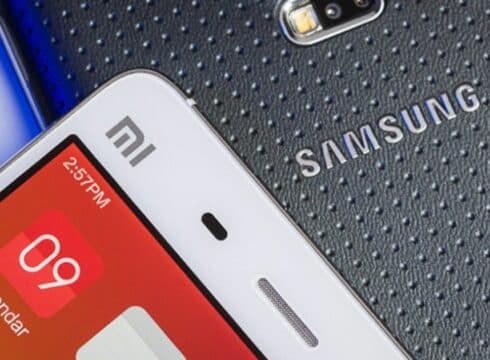Globally Samsung has beaten Huawei to regain its numero uno position with a total market share of 22%
Samsung had set up the world’s largest mobile factory in Noida in 2018 to double its earlier production from 68 Mn units a year to 120 Mn units a year
According to a report, India’s imports of mobile-specific parts increased by 185.9% between FY2015 and FY2019
Inc42 Daily Brief
Stay Ahead With Daily News & Analysis on India’s Tech & Startup Economy
The anti-China sentiment in India has come as a boon for South Korean smartphone maker Samsung, which has outpaced Xiaomi to take the top position in the smartphone market.
“In July and August, Samsung rebounded as India recovered from a nationwide lockdown. Samsung has now reached its highest market share in India since 2018 by adopting an aggressive online channel strategy to benefit from opportunities arising due to anti-China sentiments in the country,” revealed a Counterpoint report.
The report further added that globally Samsung has beaten Huawei to regain its numero uno position with a total market share of 22%.
Samsung had set up the world’s largest mobile factory in Noida in 2018 to double its earlier production from 68 Mn units a year to 120 Mn units a year. Given the import taxes in India, Samsung depends on local production to compete with its rivals on price. The company is also reportedly planning to shift major parts of its smartphone production to India from Vietnam and other countries.
According to a 2019 report by IAMAI, India’s imports of mobile-specific parts increased by 185.9% (value of imports growing from $2.8 Bn to $7.9 Bn) between FY2015 and FY2019 despite smartphone brands such as Samsung, Lava, Intex, Karbonn, Micromax manufacturing more and more components locally. The reality, many experts say, is that a fully made-in-India smartphone is decades away given that India has no semiconductor or display fabs.
Can India Become The Manufacturing Hub Of Smartphones?
Assessing India’s potential to become a global mobile manufacturing hub, India scores high in terms of ability to export mobile phones across the world (indicating high access to global markets), cheap and easy access to labor, presence of global brands, and access to technology because of the presence of leading global firms which can enable technology transfer.
The gaps lie in areas like the high cost of inputs (the price at which mobile phone components are procured), domestic manufacturing ecosystem (limited capacity to produce components and subcomponents like semiconductors, CPUs etc), and limited investments from global value chains (GVC) like Apple, Oppo, Motorola, etc (most manufacturers’ operations are limited to assembling in India).
Further, in comparison to manufacturing hubs like China, and Vietnam, India has several cost disadvantages like the high cost of debt, lack of utilities (high-quality power and water), and logistics etc. That’s also the reason why large companies like Apple manufacture phones or source components from China.
{{#name}}{{name}}{{/name}}{{^name}}-{{/name}}
{{#description}}{{description}}...{{/description}}{{^description}}-{{/description}}
Note: We at Inc42 take our ethics very seriously. More information about it can be found here.


